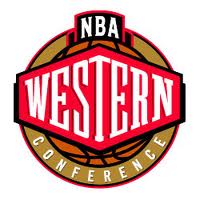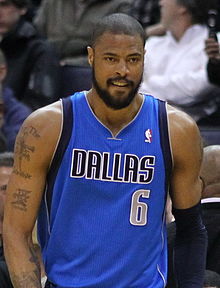 On Thursday, we brought back our Three-Man Weave, taking a look at some of the big picture questions for Eastern Conference teams that the offseason may or may not have answered.
On Thursday, we brought back our Three-Man Weave, taking a look at some of the big picture questions for Eastern Conference teams that the offseason may or may not have answered.
Today, we shift our focus to the Western Conference, where the player movement has been less dramatic and more subtle but entirely interesting and thought-provoking.
Let’s take a look at some of the bigger issues.
1. Which team has taken the biggest step forward in the Western Conference?
CHRIS SHERIDAN, PUBLISHER: Can I answer this question after I see what the Timberwolves get for Kevin Love? If they are able to get Klay Thompson along with Harrison Barnes and David Lee, that’s three starters — and no team has added three starters. But without waiting for a Love deal to go down, I like what the Mavericks have done by bringing back Tyson Chandler to shore up their weakest position and by getting Chandler Parsons when the Rockets refused to match, defying logic. That’s is why sometimes you have to roll the dice in going after a restricted free agent.
CHRIS BERNUCCA, MANAGING EDITOR: The Mavericks. The Clippers have shuffled closer to the Thunder and Spurs by adding Spencer Hawes and Jordan Farmar, but the Mavs have taken a leap into the top half of the bracket and aren’t far behind. Tyson Chandler should be rejuvenated by returning to Dallas, and Chandler Parsons  could become a third 20-point scorer to add to Dirk Nowitzki and Monta Ellis. They need another guard, but there are plenty out there – Mo Williams, Evan Turner, Jordan Crawford, Cisco Garcia, James Anderson – and they still have their $2.7 million room exception.
could become a third 20-point scorer to add to Dirk Nowitzki and Monta Ellis. They need another guard, but there are plenty out there – Mo Williams, Evan Turner, Jordan Crawford, Cisco Garcia, James Anderson – and they still have their $2.7 million room exception.
SHLOMO SPRUNG, COLUMNIST: Portland certainly has more than its fair share of young stars in LaMarcus Aldridge, Damian Lillard, Nicolas Batum and Wes Matthews. What it was largely missing last season was veteran leadership, especially off the bench. GM Neil Olshey, who started with the Clippers, snared a pair of former Los Angelenos in Steve Blake and Chris Kaman, who will add to Portland’s already strong base of role players and give the center position depth behind Robin Lopez. Blake will be a capable replacement for Mo Williams. Another year of growth for Portland’s young core four and an improved bench solidifies the squad as a top-four outfit in the Western Conference behind the Spurs, Thunder and Clippers.
2. What has been the worst free agent signing in the West?
SHERIDAN: Portland went for Chris Kaman when it could have used that same money to get Spencer Hawes. Kaman is a nice guy and all, but Hawes is a floor spacer who can operate on the perimeter and open up the middle for LaMarcus Aldridge, who takes too many of his shots from midrange. And since I am bagging on the Blazers, I should also point out that Mo Williams is twice the player that Steve Blake is, and Portland’s bench was already the worst in the league aside from Philadelphia’s.
BERNUCCA: Just pick one by Lakers GM Mitch Kupchak. When did Jordan Hill become a $9 million player? What other team was going to offer Nick Young a four-year contract? Why bid on veteran power forward Carlos Boozer  when you re-signed power forward Hill, drafted power forward Julius Randle and signed power forward Ed Davis? Does it occur to anyone that right now, LA’s starting center on Opening Night will be Robert Sacre? And by the way, they still don’t have a coach. It is not going to be a quick turnaround for the Lakers.
when you re-signed power forward Hill, drafted power forward Julius Randle and signed power forward Ed Davis? Does it occur to anyone that right now, LA’s starting center on Opening Night will be Robert Sacre? And by the way, they still don’t have a coach. It is not going to be a quick turnaround for the Lakers.
SPRUNG: From a pure basketball standpoint, Jordan Hill’s signing is pretty hard to explain. But let’s take a different approach. For the Players Association, the signings of Tim Duncan and Dirk Nowitzki are disastrous. Iconic Hall Of Fame players should not have to take pay cuts of this magnitude to help their teams construct a competitive roster. A competent and non-factious union with strong leadership is needed for the next collective bargaining agreement to get the salary cap raised and for revenue to be better shared with the players so that Duncan and Nowitzki can get paid what they deserve and not half of their fair market value.
3. How will the negotiations between Eric Bledsoe and the Phoenix Suns play out?
SHERIDAN: It will be tough for Bledsoe to leave $48 million on the table, but this is a guy who can be a max player one year from now, and the Lakers will be flush with cap room along with a need for a point guard to supplant Jeremy Lin as the starter for the long-term. Next year’s free agent class is nothing like this year’s free agent class, and Bledsoe can be No. 1 or No. 2 on the list if he can find a way to produce decent numbers in Phoenix despite its point guard glut. So I think he will take the qualifying offer.
BERNUCCA: GM Ryan McDonough’s offer of $48 million for four years is the same the Raptors gave Kyle Lowry and seems fair. And Bledsoe’s request of a maximum $80  million for five years is on par with the deals given John Wall and Kyrie Irving and seems a bit much. But Bledsoe is the only player on Phoenix’s roster who has a chance to be truly special. You would think cooler heads would prevail and the sides could meet in the middle, perhaps at $65 million for five years. But if McDonough isn’t just posturing and truly pinching pennies, he could lose Bledsoe to Atlanta, Milwaukee or Philadelphia, all of whom either have or can create the cap room to make bigger offers.
million for five years is on par with the deals given John Wall and Kyrie Irving and seems a bit much. But Bledsoe is the only player on Phoenix’s roster who has a chance to be truly special. You would think cooler heads would prevail and the sides could meet in the middle, perhaps at $65 million for five years. But if McDonough isn’t just posturing and truly pinching pennies, he could lose Bledsoe to Atlanta, Milwaukee or Philadelphia, all of whom either have or can create the cap room to make bigger offers.
SPRUNG: Atlanta as a possible destination is a good one. The Hawks have the requisite cap space, tried to trade Jeff Teague for much of last season and have a good platform for Bledsoe to make plays. With Isaiah Thomas, Goran Dragic, Archie Goodwin and rookie Tyler Ennis already on the payroll, the Suns don’t really need Bledsoe. Sure, Bledsoe is the only current Phoenix player who has the potential to be transcendent, but the need isn’t there to overpay. I see this playing out until another team signs Bledsoe to an offer sheet and sets the market for the Suns. Once they see an offer, the Suns will have three days to make an extremely important decision. If there’s a team that wants Bledsoe for the max, it seems like he’s there for the taking.
